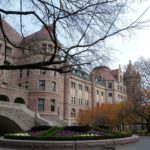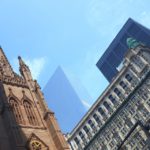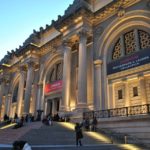Nestled among the forest of skyscrapers in Lower Manhattan lies St. Paul’s Chapel, a historical gem that dates back to the city’s colonial era. Though mostly associated with the role it played in the wake of the 9/11 attacks, church in fact has a long and rich history that dates back over 250 years. While small in stature compared to the city’ towering skyscrapers and grand monuments, it’s played an outsized role in the city’s history for centuries now. Here’s a quick look at the hidden history of St. Paul’s Chapel.
Built as a chapel-of-ease for parishioners of Trinity Church that lived north of the city’s limits, construction of the new church began in 1764 and was completed in 1766. The church endured a tumultuous period in its early days, narrowly surviving the fire of 1776 that destroyed the nearby Trinity Church. During the British occupation of New York City during the American Revolution, the church was spared and in fact became a place of worship for Lord Cornwallis and Sir William Howe, the top commander of British forces in the American colonies.
After the Revolutionary War, New York City briefly served as the capital of the United States. On April 30, 1789, shortly after his inauguration, George Washington and a number of other Founding Fathers famously worshipped at the church while Trinity Church was still being rebuilt. To this day, Washington’s pew still survives and can be viewed by the public.
Attesting its importance to the nation’s history, St. Paul’s Chapel was declared a National Historic Landmark in 1960 and an official New York City Landmark in 1966. The historic church again played a key role in the country’s history during the aftermath of the September 11th attacks. Though located very close to the World Trade Center, the chapel survived the catastrophic attacks without even a broken window and later served as a place of refuge for recovery workers in the months following the tragic events of that day. Outgoing Mayor Rudy Giuliani gave his farewell speech from the chapel in December 2001 and it later served as a memorial service location on the eve of the fifth anniversary of the attacks, with services being attended by President George W. Bush, Senator Hillary Clinton and Mayors Michael Bloomberg and Rudy Giuliani.
As a place of worship in the exciting times following the birth of the United States and refuge during the dark days following the September 11th attacks,






